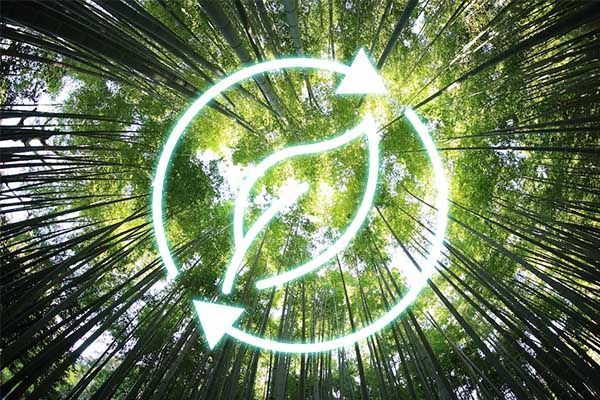Future Policy Directions for Biochar Carbon Removal
As the world grapples with the escalating impacts of climate change, biochar, a form of carbon sequestration, has garnered attention for its potential role in mitigating greenhouse gas emissions. Biochar is produced through the pyrolysis of biomass, resulting in a stable form of carbon that can be stored in soils for centuries. The increasing focus on carbon removal technologies (CDR) has led to discussions about the role of biochar in future environmental policies. This article explores potential policy directions for biochar carbon removal, highlighting the key factors that could shape its future regulatory and market landscape.
Growing Policy Support for Carbon Removal Technologies
The importance of carbon removal technologies is becoming more apparent as governments worldwide aim to achieve net-zero emissions by mid-century. Policies are gradually evolving to incentivize methods like direct air capture (DAC), afforestation, and biochar production equipment. Governments and international organizations are expected to implement stronger regulatory frameworks to support CDR technologies, including biochar.
In the context of biochar, a major driving force for future policies will be the potential for carbon credit systems and emissions trading. Carbon credits offer a financial mechanism to reward companies and projects that capture and store carbon, making biochar production economically attractive. If biochar is certified as an effective method of carbon removal, it could be integrated into carbon markets, where it can be traded as a verified credit, ensuring the long-term viability of biochar production.

Establishing Standardized Carbon Accounting
For biochar to be recognized as a legitimate method of carbon removal, robust systems for measuring, reporting, and verifying carbon sequestration will be crucial. One of the challenges currently facing biochar production is the lack of standardized protocols to accurately assess how much carbon remains stored in biochar over time. As a result, policy frameworks in the future will likely focus on the development of clear standards for biochar carbon accounting.
These standards will help policymakers determine the efficacy of biochar projects, ensuring that the carbon sequestration claims are credible and transparent. Governments may also fund research into improving the methods for monitoring biochar's longevity in soils, factoring in the environmental conditions that influence its persistence and effectiveness. Without these standardized accounting frameworks, biochar risks being overlooked as a viable solution for large-scale carbon removal.
Integration with Circular Economy Models
Biochar’s role in the circular economy is another aspect that could shape future policies. By transforming waste biomass into valuable products like biochar, the biomass pyrolysis plant model promotes resource efficiency. This aligns with growing global interest in circular economy principles, which prioritize the reduction of waste and the recycling of materials into new uses. Biochar fits neatly within this framework by providing a sustainable outlet for agricultural and industrial residues, while simultaneously sequestering carbon.
Policymakers may create incentives for businesses that incorporate biochar into their operations or manufacturing processes, whether for agricultural applications, waste management, or energy generation. These incentives could drive further investment in pyrolysis plant technologies and create a more favorable market environment for biochar as a carbon removal strategy.
Policy Incentives for Sustainable Biomass Feedstocks
The sustainability of feedstocks used in biochar production will be another focus of future policy initiatives. Biomass used for biochar is typically derived from agricultural residues, forestry waste, or dedicated crops. Ensuring that the feedstocks are sourced sustainably is critical to the environmental integrity of biochar projects. Policies that govern biochar carbon removal will likely include guidelines for sourcing biomass in ways that do not result in deforestation, land degradation, or food insecurity.
In some regions, policymakers may offer financial incentives for the use of waste biomass or low-value materials, further promoting the environmental benefits of biochar. As the demand for biomass feedstocks increases, careful management of land use and agricultural practices will be essential to prevent negative environmental impacts.
Long-Term Carbon Storage and Soil Health Regulations
Biochar’s ability to store carbon in soils for hundreds to thousands of years makes it a unique solution in the fight against climate change. However, policies must also address its potential benefits for soil health and agricultural productivity. The long-term storage of carbon in soils could contribute to improved soil fertility, water retention, and microbial activity, all of which have implications for sustainable farming practices.
Future regulatory frameworks are likely to incorporate soil health considerations into biochar policies, encouraging its use as a soil amendment. Policies may promote biochar applications that improve soil quality, especially in degraded lands or areas where conventional farming practices have led to soil erosion and nutrient depletion. Governments could incentivize the use of biochar by integrating it into programs focused on sustainable agriculture or land restoration.
Alignment with Climate Goals
As biochar technology continues to evolve, its potential to contribute to global climate goals will become more evident. Governments will likely align biochar production with national and international climate targets, such as the Paris Agreement’s aim to limit global warming to well below 2°C. Biochar could play a role in achieving carbon neutrality by offsetting a portion of a country’s emissions, making it an attractive component of climate action plans.
In addition to carbon removal, biochar can contribute to other sustainable development goals (SDGs), such as reducing waste and promoting sustainable agriculture. As such, biochar production may find its place within a broader environmental policy framework that emphasizes circular economies, waste-to-value initiatives, and soil conservation.
Path Forward: Comprehensive Policy Frameworks for Biochar
Looking ahead, biochar's potential as a carbon removal technology will largely depend on the development of comprehensive and cohesive policy frameworks that support its production and application. As biochar moves from a niche technology to a mainstream solution, governments must ensure that environmental, economic, and social considerations are integrated into the policy development process. With proper regulation, incentives, and research, biochar could emerge as a key player in the global effort to combat climate change and build a more sustainable future.



